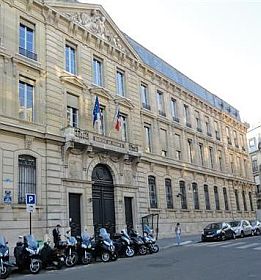|
|
|
The Banque de France is the central bank of France established on 18 January 1800 by Napoléon Bonaparte to restore confidence in the French banking system after revolution. It was nationalized in 1946 and gained greater autonomy from the government in 1993, a requirement of membership in the EU. The main task of the Bank is to implement the interest rate policy of the European System of Central Banks. Banque de France holds and manages the gold and foreign exchange reserves of the country and regulates the exchange rates between the euro and other currencies. France’s gold reserves are 2,436 tonnes, 4th largest holding in the world after the U.S., Germany and Italy. Currently, The Banque de France employs about 11,700 people and has 95 branches, 20 economic centres and 78 customer service and information offices. 49% of the Bank’s employees work in head office, 43% in the branch network and 7.5% at banknote manufacturing facilities.
Some facts (2016):
Profit before tax: EUR 5.6 billion
Gold and currency reserves: EUR 152 billion
Value of France’s gold reserves: EUR 86 billion
Coins in circulation: 19.5 billion
Key Executives:
François Villeroy de Galhau - Governor
Anne Le Lorier - First Deputy Governor
Denis Beau - Second Deputy Governor
Headquarters address:
31 Rue Croix des Petits Champs
Paris 75001
France
Phone: + 33 01 4292 4292
Website: www.banque-france.fr

